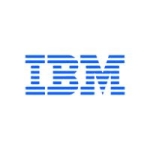What is our primary use case?
We're using it for our email filtering to check incoming emails and URLs. We're also using it for vulnerability management to see the status of our assets that are registered on the system. We also check it to see what kinds of threats and campaigns are currently being launched via emails.
How has it helped my organization?
It provides us with better insight into what's going on across our platform. It has also given us a very easy way to respond when threats or alerts come through. And when looking for someone in particular, it helps with that. It hugely improved our insight into what's going on inside the company's premises and environments.
365 Defender also helps find high-value alerts, but we haven't used it for complete automation. It has some automation features where it can try to block or quarantine things, but beyond the default automation configuration, we haven't explored deeper into using automation. The default settings work well.
And while we've always used one or two dashboards, this system has made it easier to have a quick overview on a single platform.
In addition, the threat intelligence helps prepare you for potential threats, to a certain limit, because it gives you insights into where your shortcomings are, your vulnerabilities. It also gives you some security recommendations to make improvements.
And the solution has decreased our time to respond because on high alerts you can get a quick response. The system will notify you very quickly if it detects something at a certain thread level or a custom threat level that you set.
What is most valuable?
Microsoft 365 Defender has a very great interface to help protect registered devices when it comes to web protection, which is very handy.
We also use the alert systems often. It's a great threat intelligence source for us, providing alerts for things it detects on the network and on the machines. We've used it often when there is a potential incident to see what was done on a computer. That works quite nicely because you can see everything that the user has done, including websites accessed, et cetera. And if something was on the machine, we can see what it was trying to do.
I use the alert system on a daily basis. It gives you a very good analysis of where something was found, which employee or which device. And it often gives you a good history on that. The alerts help me to monitor and check what is going on. That's a very valuable system to have.
We've also tried the attack simulation, which sends out phishing emails internally as a test to see how the users respond. We get feedback and use the training simulation as a result. We've only done that once, and it's something we want to work on a little more.
In addition, we're using the assets on the system as well as the inventory functionality. It checks all the machines to see what software is installed on them.
We've used a lot of the features on the cloud, although not everything to its full potential, but we've used 70 to 80 percent of all the features on the cloud.
What needs improvement?
In the beginning, it's difficult to navigate the system because it is quite large. Just trying to find your way and understand how the system works can be hard. After spending quite a lot of time searching it's a lot easier, but I wish it were a bit more user-friendly when you're trying to find things.
The information it provides is great, but for a newcomer, it is quite tedious and takes a long time to load. Here in South Africa, when you click, oftentimes you have to wait quite some time before you get to the next page. It's not necessarily internet-related. I think it's just that the service is a bit slow.
Also, while the solution does help to prioritize threats, unfortunately, it doesn't do so for the entire environment. The reason is that it only supports full integration from Windows 10 and up. It provides you certain information from your server environment, but when you start going with legacy services, it is a bit lacking.
Another issue that is sometimes a headache is that they constantly make changes. Things will be merged, they will get different names, or be moved around. Things will be added and other things go somewhere else. They do a lot of development to make the product better, but it's very frustrating having to search for stuff after they've moved it, because you don't always know that they have moved things. They might have little banners, but if you're just working and don't read them, you don't know where things have gone.
I would also really like to see better integration with the server platforms for managing your server environment. That's something it currently doesn't do. For all the server environments, you either need to make use of group policies or SCCM to manage that independently. It can provide you information on the system, but it doesn't have control over your server line.
Also, I make use of 365 Defender on a business level and on a personal level. On the personal level, there is a lot less functionality. Something that would be very nice is that, for the level you are on, you would only see the product you are subscribed to. For instance, if you log on via the business, you have all your action areas, anything you can do and see, on the left. Because you're using it at a corporate level, you can see and do everything. On the personal level, or in a small business where you're only using some of the features, you still have all the same options, but when you click on them, it tells you that you need to upgrade or subscribe. They should only show you what you have access to, and not all the tabs and then say, "You need to subscribe to get access to this." It just clutters the whole area.
For how long have I used the solution?
We have been using Microsoft 365 Defender for about two years.
What do I think about the stability of the solution?
Overall, it has 95 percent stability. We don't have any issues with it. It works well. Microsoft does provide frequent information when there are issues or delays. But the stability is very good.
What do I think about the scalability of the solution?
We're still learning a lot about its capabilities. It's more capable than what we use it for. That is due to a restriction on our resources and availability to get to know the system even better.
How are customer service and support?
We have contacted Microsoft tech support multiple times. They are quick to respond to the original request. Sometimes I have been quite surprised because they have replied within 15 minutes. Some of the questions we had were resolved quickly, on the order of 60 minutes. I had one that took almost two years to get resolved. But in general, they are quick to respond. Their support is very good and quick.
How would you rate customer service and support?
Which solution did I use previously and why did I switch?
Before 365 Defender, we made use of Avast as our antivirus, which had its own web console. For malware protection, we used an on-prem Cisco IronPort system that was scanning all our emails. And most of our SIEM logging information was done manually. We had much less insight into what was going on in the company.
What about the implementation team?
Because it was a new solution for us, we had a company that works with Microsoft assist us, to make sure that all the configurations were standard. But since then, we've maintained most of it ourselves. On our side there were no more than five people involved.
What was our ROI?
It's a very expensive product, but for any threat it has definitely stopped or protected us from, in that sense, it has saved money and time, by preventing things that could have happened. But is it affordable? No, it's expensive.
What's my experience with pricing, setup cost, and licensing?
If you look at everything that the solution entails, and the big cost to companies, especially medium-sized companies, one would like to have a bit of a price decrease due to economic circumstances. The functionality is fantastic, but for medium and small-sized companies it's overpriced. It would be better if it were a little bit cheaper.
Which other solutions did I evaluate?
We did look at other solutions. In the end, we decided on 365 Defender because it was all integrated. It worked to our advantage because all the products that we needed were already on the machines. All the products that you get from the Defender area are part of the built-in Windows 10 features. It gave us a better way of controlling and managing things. Overall, it made more sense to have one central place to manage and control and be alerted.
What other advice do I have?
My advice is don't be frightened when you start getting into the solution. If you are not used to the environment, it is a mouthful, and it can really scare your socks off. There's just so much to it that you won't really know where to start.
The best thing I can recommend to anybody who is starting is to get somebody who knows the system to give you a walkthrough. Also, look at the tutorials to see what the functionalities are. It will be beneficial for any person to get a good overview of what's going on in 365 Defender, the capabilities and how it looks. But getting in contact with somebody who has some experience already in using it will help you to ask where to find things. "Where do I go from here? Show me how you're set up, so I can at least see some of the functionalities."
My very first impression of 365 Defender was that I was looking for something, but I didn't even know where to start. It was too overwhelming. As I spoke to other people who knew about the system, they gave me an overview and that made it easier for me to understand and to know where to go.
365 Defender is our main deployment, but we've got the endpoints also connected on Intune. They work together to deliver coordinated detection and response in our environment. Our complete suite is pretty much all Microsoft. Our environment is a 50/50 hybrid. We use Intune for certain policy changes and some of the deployments. But because our environment has a lot of legacy systems, we make use of the normal, on-prem deployment services as well.
Sentinel is linked to our on-premises Active Directory. It helps identify things that are happening on-prem. For example, when a user's account instance gets locked out, it will show you, on Defender, from which local machine it was locked out. Or if certain things are accessed, it will show that information on the on-prem Active Directory. It works well. For investigating and responding to threats, it definitely helps by dumping the information in a centralized location with the alerts to identify a bit more flow pattern. If something happens that's not on the cloud area, but it's on-prem, it helps track and identify movement. The information from Sentinel is an added bonus.
Overall, Defender 365 has saved us time, compared to the old ways of doing things, but at the same time, I wish the site was faster. Sometimes it can be very slow.
Best-of-breed solutions versus a single vendor's suite comes down to personal experience. With best-of-breed, at least you know that they have been tested in the industry and have a lot of history behind them. Also, the redundancy would be a lot better. Going with a single vendor sometimes makes it a little bit difficult, especially if they are only focusing on one area. It's a difficult question. It might come down to the way someone was "brought up" in the security industry or the way that they trust these companies.
I give Microsoft 365 Defender a nine out of 10. Once you get to know the system, it's really awesome. It provides a lot of insights.
Disclosure: PeerSpot contacted the reviewer to collect the review and to validate authenticity. The reviewer was referred by the vendor, but the review is not subject to editing or approval by the vendor. The reviewer's company has a business relationship with this vendor other than being a customer: Reseller

















